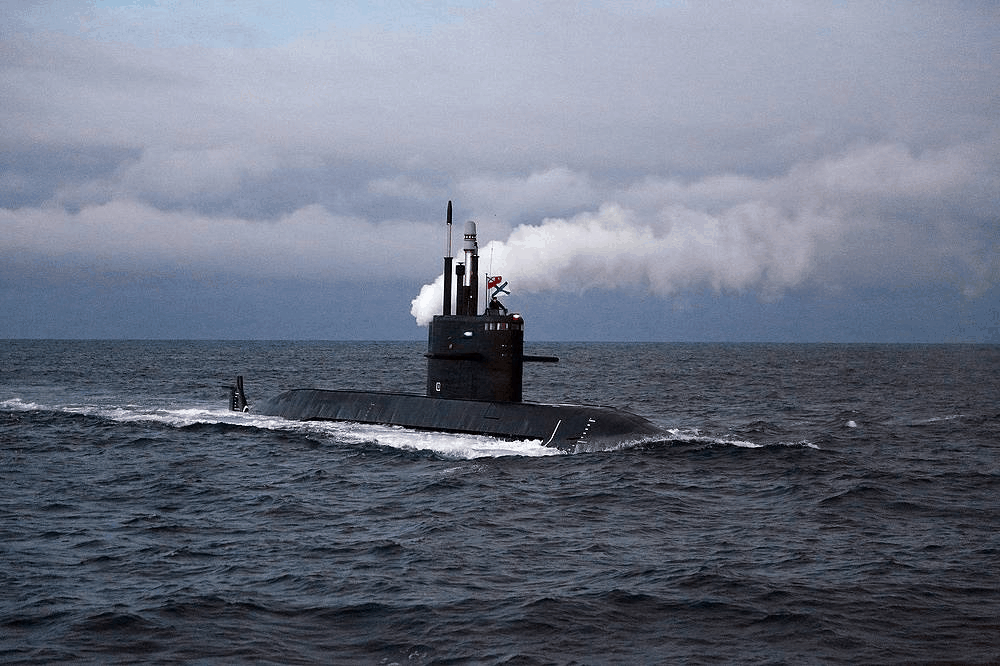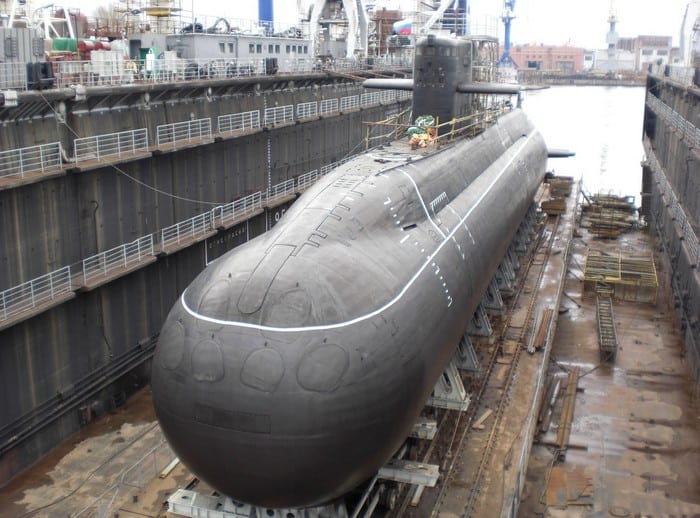
Today, the Russian public pages have confirmed the information that has been circulating for a year, if not more: the Project 677 St. Petersburg diesel-electric submarine has been decommissioned and will be utilized. The story of this vessel is interesting for its instructiveness. It serves as an almost perfect example of Russian budget money going down the drain, which we can only welcome!
The history of the project numbered 677 and codenamed Lada dates back to the early 1980s, when the Soviet Navy had just started receiving the Kilo-class submarines of Project 877. In general, they were not bad, but they were too big. Therefore, it was logical to create a smaller submarine for the “inland” Baltic and Black Seas. Such a submarine could be suitable for the allies of the Soviet block. The Polish People’s Republic would have been more willing to accept smaller boats: after receiving one Varshavyanka-class submarine, the Poles realized that it was too big for the Baltic. As a result, a submarine project appeared that was six meters shorter than Project 877 (and seven meters shorter than Project 636; yes, this is the one that the Rostov-on-Don destroyed at the Sevastopol dock belongs to). While the underwater displacement of the Project 877 boat exceeds three thousand tons, and the Project 636 is close to four, this figure for the Project 677 is only 2650 tons.
In December 1990, the military-industrial commission of the Presidium of the USSR Council of Ministers reviewed the 677 project and rejected it. Already then, suspicions arose that the designers were trying to sell the Navy another dud, a product that had no qualitative advantage over its predecessors. As a result of this approach, the Navy simultaneously operated submarines of literally dozens of different designs and their modifications, which did not facilitate their operation and maintenance. Adding another project to the mix was deemed inappropriate at the time. But in a few years, the attitude toward Lada-class submarines changed. Despite all the problems of the dashing 1990s, Yeltsin’s government decided to invest in the project. “Lada,” by the way, was not the only ‘wunderwaffe’ launched at that time – it is worth mentioning at least the Novik Frigate Project 12441. Its construction began in 1997 but was never completed, as the project was recognized as a failure. Unlike the Novik, the St. Petersburg, the first Project 677 boat, was completed, and it milked the Russian budget for much longer.

Construction of the first Lada, named St. Petersburg, began in December 1997. To put it mildly, the work was slow: the submarine was launched in 2004, and the Navy commissioned it only in 2010. At the same time, instead of the Baltic Sea (for which the 677 project was actually created), the boat was sent to the Northern Fleet.
To put it mildly, naval sailors’ reaction to this collateral technology miracle was lukewarm. In February 2012, the then Navy Commander-in-Chief Vysotsky stated:
“…the declared technical characteristics of Project 677 submarines are not confirmed by the tests of the “St. Petersburg” lead submarine. The Russian Navy does not need the Lada in its existing form. We don’t need new “brains” with World War II era weapons. Why? Who needs it? And its operational properties are the same”.
This statement reflects the essence of Lada’s problem: at a time when anaerobic power plants were increasingly being used in the world (for example, German fuel cell power plants or Swedish Stirling engines), the Russian military industry could not offer anything better than lead-acid batteries. By the way, the admiral was also wrong about brains and weapons: Lada could not use missiles, and its only weapons were torpedoes.
At the time, the next two Project 677 boats were already under construction, laid down in 2005 and 2006. Due to problems that surfaced during the St. Petersburg trials, their construction was frozen. But after a while, the military, together with shipbuilders, decided that Russia is rich, so we can continue to cut into the budget. In 2013 and 2015, these boats were re-pledged under the 677M modification project, which provides, among other things, for the use of Kalibr missiles. The anaerobic propulsion system, however, was never introduced. The construction was carried out traditionally – slowly and sadly. The Kronstadt, the first submarine of the 677M project, was commissioned into the Navy only on January 31, 2024, after 18.5 years of construction! Velikie Luky (originally called Sevastopol) was launched in December 2022, 16 years after the first laying of the foundation stone. It is planned that it will be ready this year, but in my opinion, this is very unlikely. Two more submarines, Vologda and Yaroslavl, were laid down in June 2022, and there is no word on the expected timeframe for their readiness. And according to the state arms program, 14 (!) boats of the Project 677 were planned to be built by 2020…
And what about St. Petersburg? Its story reminds me of a politically incorrect joke. A Gypsy looks at his dirty children and asks a woman: “Do you think it’s easier to give birth to new ones than to wash these?” For about ten years, the St. Petersburg was actually in trial operation, not being a fully operational ship. Only in September 2021 – 24 years after the start of construction – was the boat commissioned into service. At the same time, there were attempts to offer a version of its modernization to bring its characteristics up to the level of the 677M. There were drawings, calculations… and it turned out that the cost of modernization would be equal to the cost of building a new submarine! Otherwise, the basic Lada would not be able to be turned into a Kalibr carrier – and these missiles, as the aggression against Ukraine shows, have become the main weapon of locked-down diesel-electric submarines. So, eventually, the decision was made to dispose of it! It’s a pity, of course, because this monstrosity would have kept draining money from their budget…
In general, it is curious: our missiles sent the “first capital” – “Moskva” (cruiser – ed.) to the bottom. The Russians did it themselves with the second one, “St. Petersburg”. :)))
P.S. It seems that the Kronstadt is confidently following the path of the St. Petersburg. No sooner had this submarine been commissioned into the fleet on January 31 with all the naval pathos, than on February 6, it was returned to the shipyard and began to dress in construction scaffolding :))) Obviously, before the first deployment, it will still need some money from the budget ?.
Підтримати нас можна через:
Приват: 5169 3351 0164 7408 PayPal - [email protected] Стати нашим патроном за лінком ⬇
Subscribe to our newsletter
or on ours Telegram
Thank you!!
You are subscribed to our newsletter